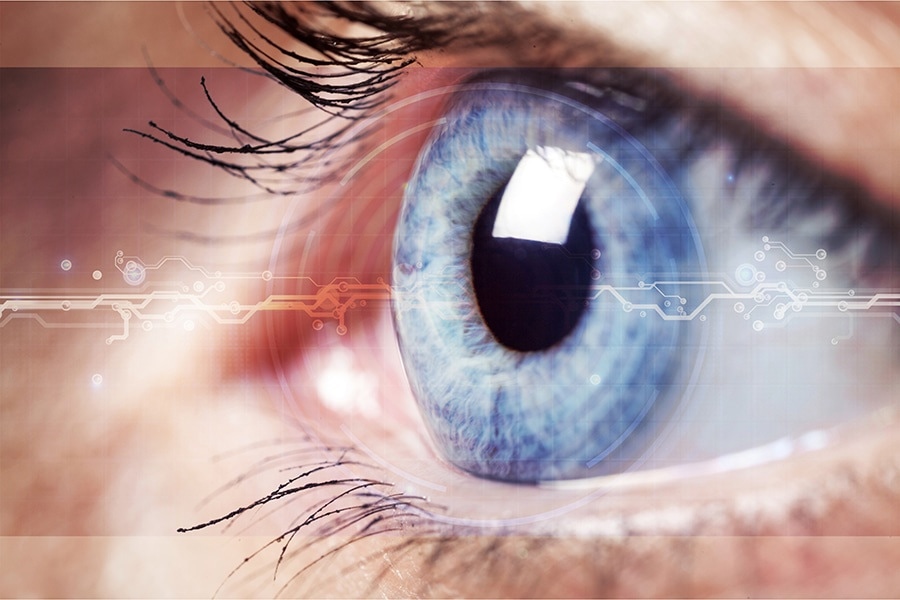
Located in the rear interior wall of the eye, the retina is a nerve cell-rich structure that is responsible for translating the light that enters the eye into nerve signals, allowing for vision to occur at a wide range of ambient conditions1. The light receptors present in the retina are known as rods and cones, where rods are responsible for our vision during dim light, whereas cones are responsible for our ability to see in detail and color. Like many other research projects that have mapped the brain function of several neuronal processes, the retina has been the most characterized as a result of its easily accessible location within the brain1.
Despite the impressive knowledge on the complex functioning nature of the retina, it is estimated that more than 3 million people continue to suffer from vision loss as a result of retinal damage worldwide. Two primary diseases associated with this distinct type of blindness include retinitis pigmentosa (RP) and age-related macular degeneration (AMD). While RP is typically rare in nature, it describes a group of genetic disorders that involve a breakdown and subsequent loss in the cells of the retina, causing patients to experience difficulty seeing at night as well as a loss of peripheral vision2. As a much more common condition, AMD is a leading cause of vision loss among individuals above the age of 50. As a result of damage induced to the macula, which is a small spot located near the center of the retina that is needed for sharp, central vision, AMD typically causes blurriness and blank spots to appear in the central vision of those affected3.
Surgery and any other form of treatment are not presently available in repairing the damage that has been caused to the photoreceptors during either of these disorders; however, several different types of retinal prostheses have been developed and shown to achieve some sort of improvement in the light sensation of affected patients. These types of interventions rely on the surviving retinal neurons at this location of the eye to be become activated upon exposure to an electrical stimulation4. While inspiring in its potential, over 75% of patients who have received these types of retinal implants have not achieved a significant improvement in their visual acuity. A recent collaborative effort between a team of engineers at the University of California San Diego and neighboring startup Nanovision Biosciences Inc. have found successful in vitro results for a new potential type of retinal prosthesis5.
A typical retinal prosthesis must be capable of replacing the phototransduction function of the damaged photoreceptor cells within the retina as a result of direct electrical stimulation to the remaining cells. In order to do so, two important aspects of this device include the sensor location and how the device is powered. Three different retinal locations of epiretinal, subreitnal, and subrachoroidal, describe where the electrode can be implanted, all of which will typically be placed as a micro-photodiode array. Similarly, the two methods of powering these devices can either involve laser light projection or inductive electromagnetic telemetry4.
In the system proposed by this group of researchers led by Gabriel Siva and Gert Cauwenberghs, some key aspects of the architecture of this device play a significanant role in its functionality, of which include a photosensitive silicon nanowire-based electrode array, an external pulse transmitter responsible for delivering neuronal stimulation, an internal demodulator, and an inductive link4. By employing hardware at both the external and internal sides of the retina, a significant advantage is achieved, as this device is able to relay visual information from both sides of the retina, therefore increasing the spatial resolution of this prosthesis5. The revolutionary technology used in this device allows for the nanowires to simultaneously sense light entering the eye while also electrically stimulating the retina to provide a higher resolution as compared to any other device used in the past.
As stated, many retinal prostheses used in the past have previously required a visual sensor to be present outside of the eye in order to capture a visual scene, which was then transformed into signals that the retinal neurons could accept and subsequently be stimulated. The silicon nanowires eliminate the need for this external device as they are able to mimic the cones and rods that are normally present within the retina in order to directly stimulate these neuronal cells4. The functionality of this device was validated through an ex vivo experiment involving rat retina tissue. In this experiment, the retina tissue was placed with its bipolar cells facing the side of the device, enabling subretinal stimulation to be recorded and confirmed. The present work conducted by this research team offers an important step in the combined effort between engineering and clinical applications of optically addressable retinal prostheses4.
References:
- "Eye, Brain, and Vision." Eye, Brain, and Vision.
- "Facts About Retinitis Pigmentosa." National Institutes of Health. U.S. Department of Health and Human Services, Web. https://www.nei.nih.gov/.
- "Facts About Age-Related Macular Degeneration." National Institutes of Health. U.S. Department of Health and Human Services. Web. https://www.nei.nih.gov/.
- Ha, Sohmyung, Massoud L. Khraiche, Abraham Akinin, Yi Jing, Samir Damle, Yanjin Kuang, Sue Bauchner, Yu-Hwa Lo, William R. Freeman, Gabriel A. Silva, and Gert Cauwenberghs. "Towards High-resolution Retinal Prostheses with Direct Optical Addressing and Inductive Telemetry." Journal of Neural Engineering 13.5 (2016). Web.
- University of California - San Diego. "New nano-implant could one day help restore sight: With high-resolution retinal prosthesis built from nanowires and wireless electronics, engineers are one step closer to restoring neurons' ability to respond to light." ScienceDaily. ScienceDaily, 14 March 2017. www.sciencedaily.com/releases/2017/03/170314081649.htm.
- Image Credit: Shutterstock.com/billionphotos
Disclaimer: The views expressed here are those of the author expressed in their private capacity and do not necessarily represent the views of AZoM.com Limited T/A AZoNetwork the owner and operator of this website. This disclaimer forms part of the Terms and conditions of use of this website.